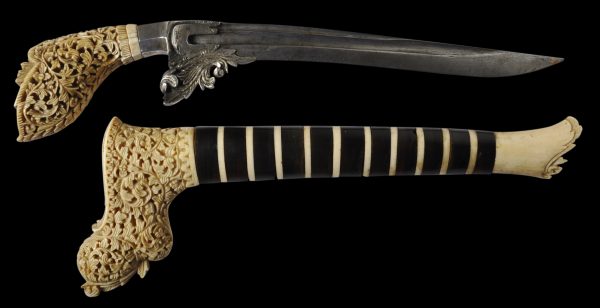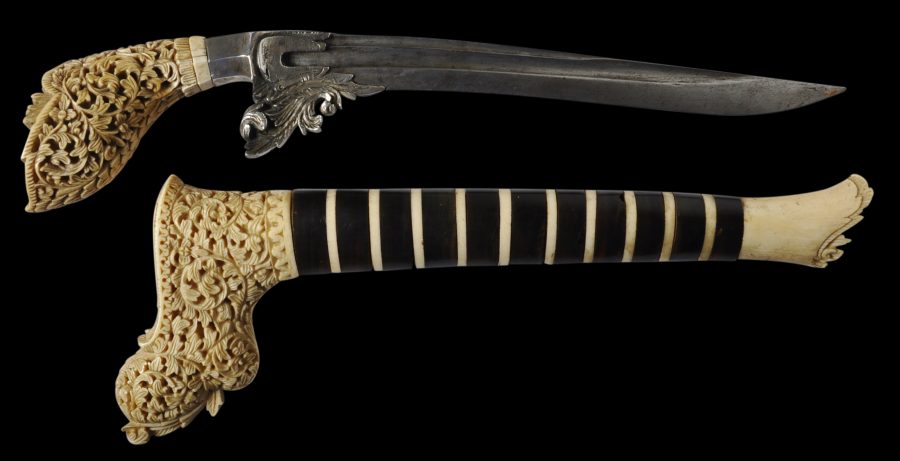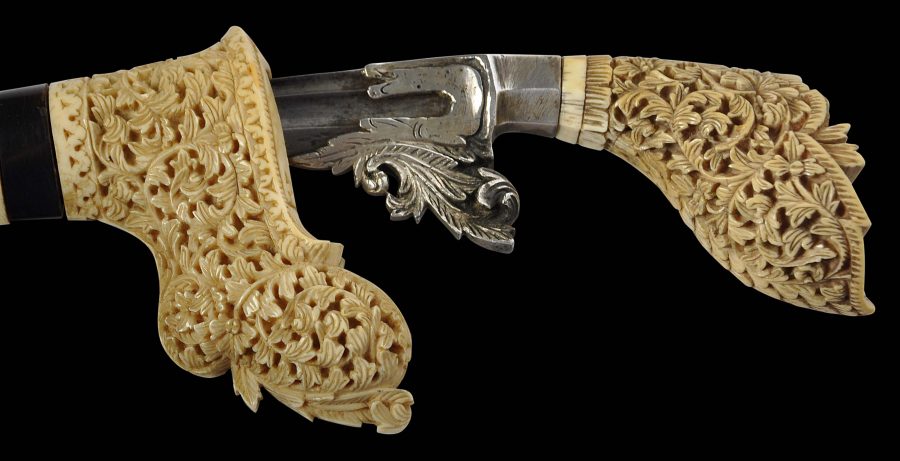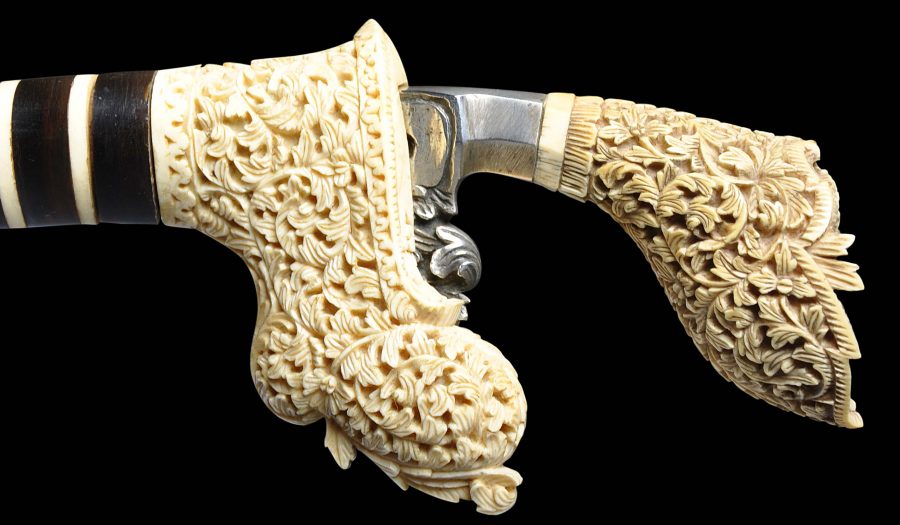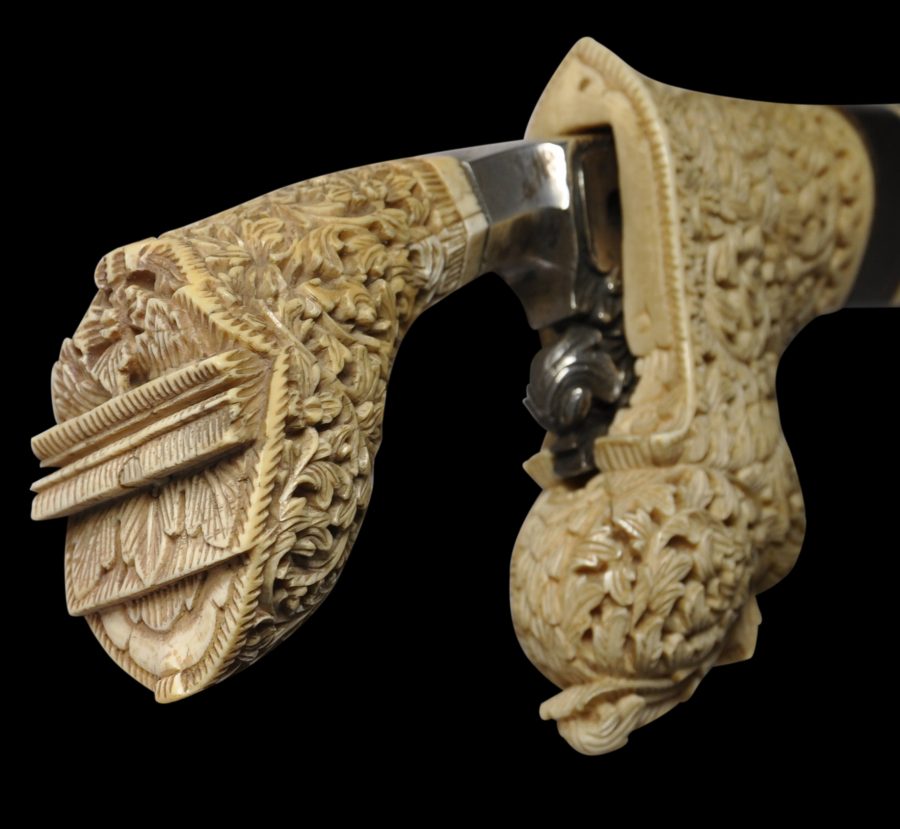This spectacular, rare Sumatran dagger is of the highest quality and most probably was commissioned by a local sultan as a presentation gift.
A similar example published in Brinkgreve & Sulistianingsih (2009, p. 127) and in the National Museum in Jakarta was a gift from the Sultan of Deli, North Sumatra, to the Dutch Governor-General and is dated to before 1877.
Hales (2103, p. 203) says that work such as that shown on this dagger is associated with the Sultanate of Asahan, a Malay sultanate located on the coast south of Deli (now known as Medan).
The example here has a single-edged steel blade. The ricasso is covered in high-grade sheet silver, engraved and shaped as a leafy flourish. The hilt is of hippopotamus tooth and deeply and intricately carved with Islamic-Malay inspired leafy scrollwork. Hippopotamus tooth was the preferred medium for this sort of carving because of its particular hardness and glossiness. It was brought to Southeast Asia in the 18th and 19th centuries by Arab traders where it was worked by local artisans.
The hand guard is similarly worked. The chape is also of hippopotamus tooth and is carved with some additional leaf scrollwork.
The scabbard comprises rings of dark buffalo horn interspersed with fine rings of hippopotamus tooth.
This form of dagger became known as a tumbok lada – ‘tumbok’ means ‘to crush’ and ‘lada’ means ‘pepper’. The name is a reference to the shape of the hilt which resembles the pounder to crush pepper corns (Van Zonneveld, 2001, p. 149).
The item is in near-perfect condition. It is an almost unique opportunity to acquire such a rare and beautiful example.
The dagger comes from a private English collection and has been in the UK since at least the 1980s.
References
Brinkgreve, F,. & R. Sulistianingsih (eds), Sumatra: Crossroads of Cultures, KITLV Press, 2009.
Hales, R., Islamic and Oriental Arms and Armour: A Lifetime’s Passion, Robert Hale CI Ltd, 2013.
Van Zonneveld, A., Traditional Weapons of the Indonesian Archipelago, C. Zwartenkot Art Books, 2001.


